
Documentary about the Soviet film director and his changing fortunes during the Stalin years.

Self

Self
The Midnight Sun Film Festival is held every June in the Finnish village of Sodankylä beyond the arctic circle — where the sun never sets. Founded by Aki and Mika Kaurismäki along with Anssi Mänttäri and Peter von Bagh in 1985, the festival has played host to an international who’s who of directors and each day begins with a two-hour discussion. To mark the festival’s silver anniversary, festival director Peter von Bagh edited together highlights from these dialogues to create an epic four-part choral history of cinema drawn from the anecdotes, insights, and wisdom of his all-star cast: Coppola, Fuller, Forman, Chabrol, Corman, Demy, Kieslowski, Kiarostami, Varda, Oliveira, Erice, Rouch, Gilliam, Jancso — and 64 more. Ranging across innumerable topics (war, censorship, movie stars, formative influences, America, neorealism) these voices, many now passed away, engage in a personal dialogue across the years that’s by turns charming, profound, hilarious and moving.

Self
Until the 1970s, Italian cinema dominated the international scene, even competing with Hollywood. Then, in just a few years, came its rapid decline, the flight of our greatest producers, a crisis among the best writer-directors, the collapse of production. But what are the true causes and circumstances of this decline? In an attempt to provide an answer to this question, Di Me Cosa Ne Sai strives to depict this great cultural change. Begun as a loving examination of Italian cinema, the film transformed into a docu-drama that alternates between interviews with the great names of the past and fragments of cultural and political life of the last 30 years. It is a travel diary that shows Italy from north to south, through movie theatres; television-addicted kids; Berlusconi and Fellini; shopping centers; TV news editors; stories of impassioned film exhibitors and directors who fight for their films; and interviews with itinerant projectionists and great European directors.

Cinematography
"Il mondo perduto" collects six documentaries that Vittorio De Seta shot in 1954 in Sicily and four other important short films that he directed between 1958 and 1959 in Sardinia and Calabria. De Seta always turns his eye to realities already then threatened by "development without progress", giving a precious testimony of rituals, customs and knowledge that have now disappeared. Thanks to the contribution of the Cineteca di Bologna and Martin Scorsese, who called De Seta "an anthropologist who expresses himself with the voice of a poet", all these works have been digitized.

Director
"Il mondo perduto" collects six documentaries that Vittorio De Seta shot in 1954 in Sicily and four other important short films that he directed between 1958 and 1959 in Sardinia and Calabria. De Seta always turns his eye to realities already then threatened by "development without progress", giving a precious testimony of rituals, customs and knowledge that have now disappeared. Thanks to the contribution of the Cineteca di Bologna and Martin Scorsese, who called De Seta "an anthropologist who expresses himself with the voice of a poet", all these works have been digitized.

Director

Writer
Collective film for the 60th anniversary of the Universal Declaration of Human Rights, with 30 directors each helming a segment about one of the 30 articles of the Declaration.

Director
Collective film for the 60th anniversary of the Universal Declaration of Human Rights, with 30 directors each helming a segment about one of the 30 articles of the Declaration.

Himself
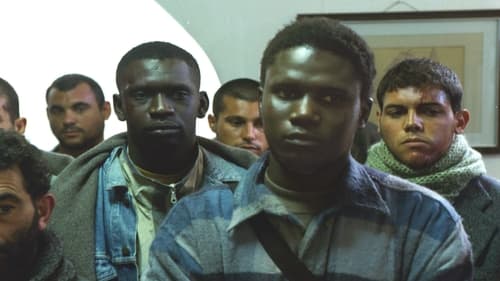
Writer
The story of a young Senegalese man who treks the Sahara, takes an immigrant boat bound for Italy, the attempts to eke out a living there - finally deciding to return to his native place. Vittorio De Seta's first fiction feature since 1969.

Director
The story of a young Senegalese man who treks the Sahara, takes an immigrant boat bound for Italy, the attempts to eke out a living there - finally deciding to return to his native place. Vittorio De Seta's first fiction feature since 1969.

Self

Himself

Director
Vittorio De Seta's documentary about the Calabria, revisiting the territory he documented in I Dimenticati in 1959.

Director
In this 1980 documentary, originally in three parts but presented here in its entirety, Vittorio De Seta presents the drama of the Vietnamese refugees who arrived in the great Asian metropolis.

Director
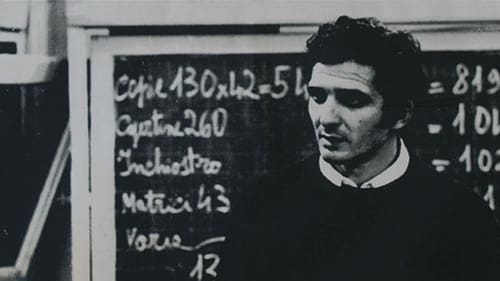
Screenplay
In a school on the extreme outskirts of Rome, a young teacher, instead of neglecting his half-empty classroom, decides to tackle the problem looking for the children who do not attend classes.

Director
In a school on the extreme outskirts of Rome, a young teacher, instead of neglecting his half-empty classroom, decides to tackle the problem looking for the children who do not attend classes.

Writer
When her husband returns from his work abroad with a guest, a young girl, his wife suspects a liaison. She leaves her home. Her boss takes her to the Côte d'Azur. They get closer during the long voyage and the man invites her to his marital home.

Director
When her husband returns from his work abroad with a guest, a young girl, his wife suspects a liaison. She leaves her home. Her boss takes her to the Côte d'Azur. They get closer during the long voyage and the man invites her to his marital home.

Self
In this documentary, giants of italian cinema such as Rossellini, De Sica, Fellini and Zavattini talk about the importance of cinema after WW2, and about huge moments of social rebellion. This movie gives the floor to the creators of italian neorealism.
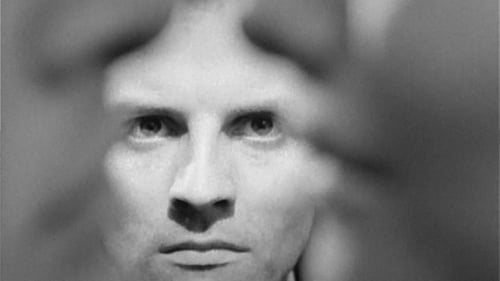
Story
A young writer descends into madness. Alienated, neurotic, and plagued by guilt, Michele retreats from reality, loses interest in work, and comes to the brink of suicide before being sent to an asylum for shock therapy. Escaping from the asylum, Michele returns to his boyhood home, where he learns the reasons for his present mental state.

Producer
A young writer descends into madness. Alienated, neurotic, and plagued by guilt, Michele retreats from reality, loses interest in work, and comes to the brink of suicide before being sent to an asylum for shock therapy. Escaping from the asylum, Michele returns to his boyhood home, where he learns the reasons for his present mental state.

Screenplay
A young writer descends into madness. Alienated, neurotic, and plagued by guilt, Michele retreats from reality, loses interest in work, and comes to the brink of suicide before being sent to an asylum for shock therapy. Escaping from the asylum, Michele returns to his boyhood home, where he learns the reasons for his present mental state.

Director
A young writer descends into madness. Alienated, neurotic, and plagued by guilt, Michele retreats from reality, loses interest in work, and comes to the brink of suicide before being sent to an asylum for shock therapy. Escaping from the asylum, Michele returns to his boyhood home, where he learns the reasons for his present mental state.

Director of Photography
A Sardinian peasant is implicated in the murder of a policeman and, although innocent, he doesn’t give himself up, lacking faith in the judicial system and fearing that he may lose his sheep while awaiting trial. He leaves for the mountains with his brother but life is difficult and his flock dies. Returning to the town he discovers his family in abject poverty. He procures a gun and, forced by his social predicament, resorts to banditry.

Producer
A Sardinian peasant is implicated in the murder of a policeman and, although innocent, he doesn’t give himself up, lacking faith in the judicial system and fearing that he may lose his sheep while awaiting trial. He leaves for the mountains with his brother but life is difficult and his flock dies. Returning to the town he discovers his family in abject poverty. He procures a gun and, forced by his social predicament, resorts to banditry.

Writer
A Sardinian peasant is implicated in the murder of a policeman and, although innocent, he doesn’t give himself up, lacking faith in the judicial system and fearing that he may lose his sheep while awaiting trial. He leaves for the mountains with his brother but life is difficult and his flock dies. Returning to the town he discovers his family in abject poverty. He procures a gun and, forced by his social predicament, resorts to banditry.

Director
A Sardinian peasant is implicated in the murder of a policeman and, although innocent, he doesn’t give himself up, lacking faith in the judicial system and fearing that he may lose his sheep while awaiting trial. He leaves for the mountains with his brother but life is difficult and his flock dies. Returning to the town he discovers his family in abject poverty. He procures a gun and, forced by his social predicament, resorts to banditry.

Director of Photography
Vittorio De Seta travels to Alessandria del Carretto, a small town in the province of Cosenza, to capture a unique celebration known as the “Feast of Silver.”

Writer
Vittorio De Seta travels to Alessandria del Carretto, a small town in the province of Cosenza, to capture a unique celebration known as the “Feast of Silver.”

Producer
Vittorio De Seta travels to Alessandria del Carretto, a small town in the province of Cosenza, to capture a unique celebration known as the “Feast of Silver.”

Director
Vittorio De Seta travels to Alessandria del Carretto, a small town in the province of Cosenza, to capture a unique celebration known as the “Feast of Silver.”

Director of Photography
Documentary about the work of herring fishers in Sicily.

Producer
Documentary about the work of herring fishers in Sicily.
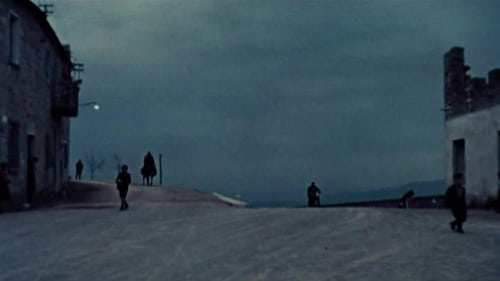
Producer
Against the background of flocks of sheep at pasture, mules walking down unpaved roads, tractors in the fields, and isolated figures in a deserted village, a caption explains that Barbagia is a vast region in Sardinia; Orgosolo, Oliena and Manoiana are villages of shepherds and the men spend most of the year far away, with their flocks. This is why the houses and the children are entrusted to the women, who cut the wood, work the fields and prepare bread, shepherds’ bread.

Director of Photography
Against the background of flocks of sheep at pasture, mules walking down unpaved roads, tractors in the fields, and isolated figures in a deserted village, a caption explains that Barbagia is a vast region in Sardinia; Orgosolo, Oliena and Manoiana are villages of shepherds and the men spend most of the year far away, with their flocks. This is why the houses and the children are entrusted to the women, who cut the wood, work the fields and prepare bread, shepherds’ bread.

Writer
Against the background of flocks of sheep at pasture, mules walking down unpaved roads, tractors in the fields, and isolated figures in a deserted village, a caption explains that Barbagia is a vast region in Sardinia; Orgosolo, Oliena and Manoiana are villages of shepherds and the men spend most of the year far away, with their flocks. This is why the houses and the children are entrusted to the women, who cut the wood, work the fields and prepare bread, shepherds’ bread.
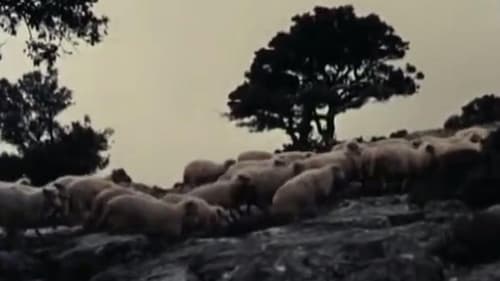
Director of Photography
The striking landscapes of rural Sardinia provide the backdrop to this lyrical look at the hardscrabble lives of the region’s shepherds in winter.

Director
Against the background of flocks of sheep at pasture, mules walking down unpaved roads, tractors in the fields, and isolated figures in a deserted village, a caption explains that Barbagia is a vast region in Sardinia; Orgosolo, Oliena and Manoiana are villages of shepherds and the men spend most of the year far away, with their flocks. This is why the houses and the children are entrusted to the women, who cut the wood, work the fields and prepare bread, shepherds’ bread.

Director
Documentary about the work of herring fishers in Sicily.

Director
The striking landscapes of rural Sardinia provide the backdrop to this lyrical look at the hardscrabble lives of the region’s shepherds in winter.

Co-Producer
Sold as slaves to a wealthy Roman, Lea and Esther, two Carthaginian sisters, are offered as gifts to the ambitious daughter of a proconsul and end up involved in spite of themselves in a dangerous game of power.

Director of Photography
Filming amid the flaxen wheat fields of Sicily, Vittorio De Seta documents the everyday rituals of farmers during harvest time.

Writer
Filming amid the flaxen wheat fields of Sicily, Vittorio De Seta documents the everyday rituals of farmers during harvest time.

Director
Filming amid the flaxen wheat fields of Sicily, Vittorio De Seta documents the everyday rituals of farmers during harvest time.

Director of Photography
Sicily, Granitola, 1955. At the first light of dawn, the fishermen set out in their boats for open water, timing the rhythm of their oars to murmured chants. They set their nets in the sea, regulate the cords, organize the boats in a square. The men’s work becomes increasingly harder as the tuna are hoisted onto the boats, wriggling, beating their tails until death arrives and the water is tinged with blood.

Writer
Sicily, Granitola, 1955. At the first light of dawn, the fishermen set out in their boats for open water, timing the rhythm of their oars to murmured chants. They set their nets in the sea, regulate the cords, organize the boats in a square. The men’s work becomes increasingly harder as the tuna are hoisted onto the boats, wriggling, beating their tails until death arrives and the water is tinged with blood.

Director
Sicily, Granitola, 1955. At the first light of dawn, the fishermen set out in their boats for open water, timing the rhythm of their oars to murmured chants. They set their nets in the sea, regulate the cords, organize the boats in a square. The men’s work becomes increasingly harder as the tuna are hoisted onto the boats, wriggling, beating their tails until death arrives and the water is tinged with blood.
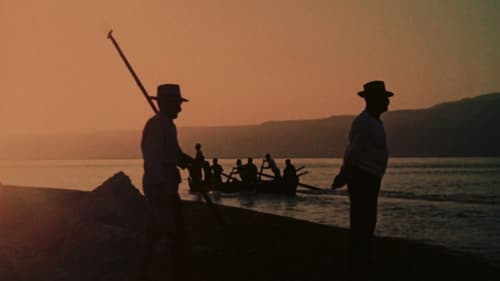
Editor
A short anthropological documentary from 1954. Director De Seta was fortunate enough to document swordfish fishing; by 1956 it no longer existed.

Director of Photography
A short anthropological documentary from 1954. Director De Seta was fortunate enough to document swordfish fishing; by 1956 it no longer existed.

Producer
A short anthropological documentary from 1954. Director De Seta was fortunate enough to document swordfish fishing; by 1956 it no longer existed.

Writer
A short anthropological documentary from 1954. Director De Seta was fortunate enough to document swordfish fishing; by 1956 it no longer existed.

Director
A short anthropological documentary from 1954. Director De Seta was fortunate enough to document swordfish fishing; by 1956 it no longer existed.

Director of Photography
A short film which retells the story of Jesus Christ's death and resurrection.

Director
Harshness and beauty exist side by side in this look at the lives of sulfur mine workers and their families in southern Italy.

Director
A short film which retells the story of Jesus Christ's death and resurrection.

Director of Photography
The first light of dawn. The sound of a boat and the screech of birds fill the wide expanse of sea. Black rocks emerge from the water, the “sciara” – the volcanic scoria – of Stromboli, the underwater sulfurous emanations, the layers of reddish rock eroded by the sea. The roar of the volcano can be heard, the flames and the liquid lava are thrown skyward. As nature unleashes itself, the fishermen row toward the shore, the sheep stray and the women return home.

Producer
The first light of dawn. The sound of a boat and the screech of birds fill the wide expanse of sea. Black rocks emerge from the water, the “sciara” – the volcanic scoria – of Stromboli, the underwater sulfurous emanations, the layers of reddish rock eroded by the sea. The roar of the volcano can be heard, the flames and the liquid lava are thrown skyward. As nature unleashes itself, the fishermen row toward the shore, the sheep stray and the women return home.

Writer
The first light of dawn. The sound of a boat and the screech of birds fill the wide expanse of sea. Black rocks emerge from the water, the “sciara” – the volcanic scoria – of Stromboli, the underwater sulfurous emanations, the layers of reddish rock eroded by the sea. The roar of the volcano can be heard, the flames and the liquid lava are thrown skyward. As nature unleashes itself, the fishermen row toward the shore, the sheep stray and the women return home.

Director
The first light of dawn. The sound of a boat and the screech of birds fill the wide expanse of sea. Black rocks emerge from the water, the “sciara” – the volcanic scoria – of Stromboli, the underwater sulfurous emanations, the layers of reddish rock eroded by the sea. The roar of the volcano can be heard, the flames and the liquid lava are thrown skyward. As nature unleashes itself, the fishermen row toward the shore, the sheep stray and the women return home.

Assistant Director

Screenplay










